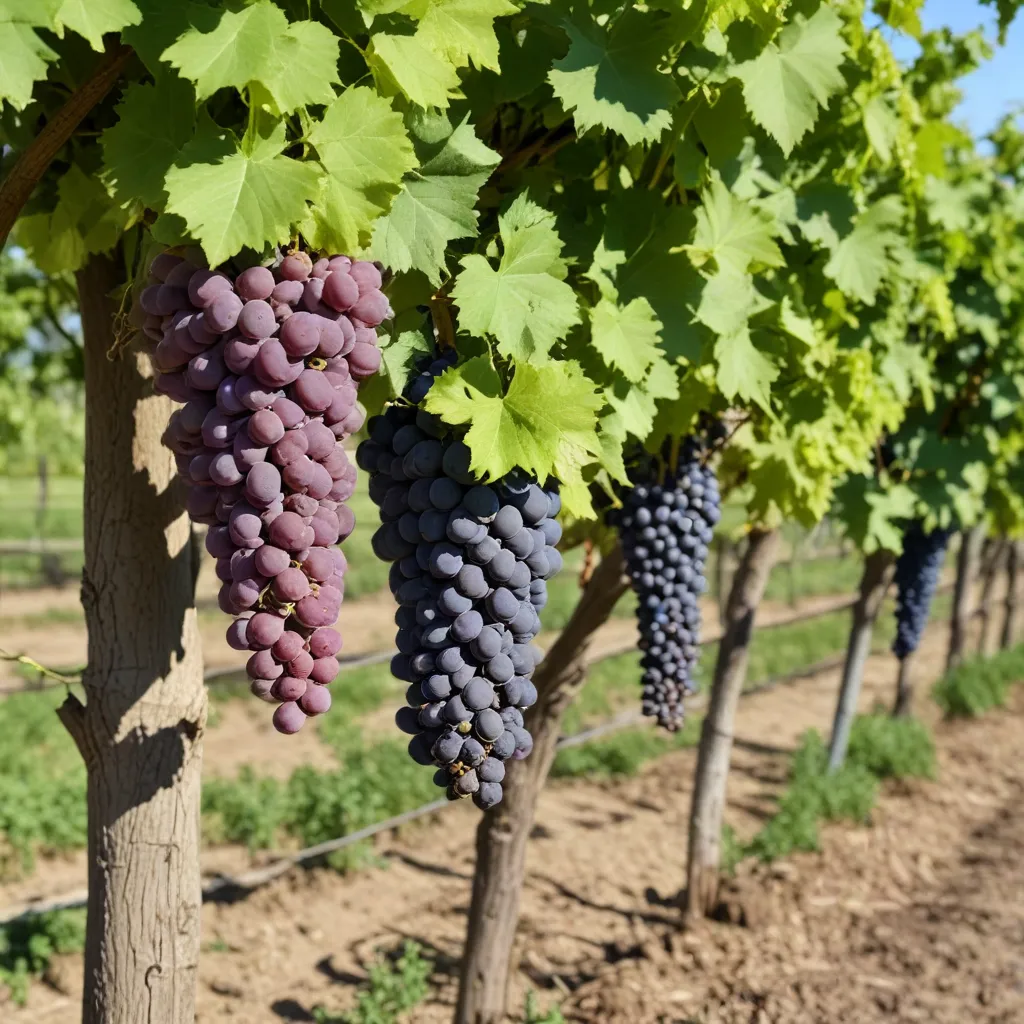
At the Wine Garden Inn, we take great pride in our estate-grown produce and the award-winning wines we craft from our own vineyards. Maintaining the optimal growing conditions for our grapevines is a crucial aspect of our winemaking journey, requiring meticulous attention to the soil, climate, and vineyard management practices. In this comprehensive guide, we’ll explore the essential elements of cultivating the perfect environment for thriving grapevines, sharing insights that can benefit both seasoned vintners and aspiring home gardeners.
Soil Requirements
The foundation of any successful vineyard begins with the soil. Grapevines thrive in well-drained, nutrient-rich soils with a slightly acidic pH. Soil type and composition play a significant role in the development and health of the vines. Ideally, the soil should be a blend of loam, sand, and clay, providing the necessary balance of moisture retention, aeration, and nutrient availability.
Soil pH is equally crucial, with the optimal range falling between 5.5 and 6.5. This slightly acidic environment supports the uptake of essential nutrients, such as nitrogen, phosphorus, and potassium, which are vital for vigorous growth and robust fruit production. Regular soil testing can help identify any imbalances or deficiencies, allowing you to make targeted amendments.
Proper soil drainage is also a critical factor. Grapevines thrive in well-drained soils that prevent waterlogging, which can lead to root rot and other detrimental conditions. Ensuring adequate drainage can be achieved through strategic site selection or the installation of drainage systems, if necessary.
Climate Considerations
The climate in which grapevines are grown significantly influences their growth, fruit quality, and wine characteristics. Ideal temperature preferences for grapevines typically range from 50°F to 90°F, with a particular emphasis on warm days and cool nights during the growing season.
Ample sunlight exposure is another essential requirement. Grapevines need a minimum of six hours of direct sunlight per day, with eight to ten hours being optimal. This solar radiation not only fuels photosynthesis but also helps to concentrate sugars and develop the desired flavor profiles in the grapes.
Precipitation patterns can also shape the character of the wine. While grapevines can tolerate moderate drought conditions, excessive rainfall during the growing season can lead to issues like fungal diseases and reduced fruit quality. Careful monitoring and, if necessary, supplemental irrigation can help maintain the delicate balance of moisture.
Planting and Propagation
When establishing a new vineyard, the site selection process is crucial. Choose a location that offers the ideal soil conditions, sunlight exposure, and air circulation to support the health and productivity of your grapevines.
Selecting the appropriate grapevine varieties is another critical decision. Consider factors such as cold hardiness, disease resistance, and the desired wine style to ensure a successful harvest. Many renowned viticulture programs, like the one at the University of Minnesota, have developed cultivars specifically tailored to northern climates.
Grapevines can be propagated through various methods, including cuttings, layering, and grafting. Each technique has its own advantages and requires careful attention to detail to ensure a high success rate.
Vineyard Management
Ongoing vineyard management practices are essential for maintaining the health and productivity of your grapevines. Regular pruning, trellising, and training techniques help to optimize canopy structure, promote air circulation, and ensure the even distribution of sunlight and nutrients.
Vigilant pest and disease control is also crucial. Proactive measures, such as canopy management, removal of infected plant material, and the use of organic or targeted fungicides, can help mitigate the impact of common issues like powdery mildew, downy mildew, and botrytis.
Irrigation and Water Needs
Proper water management is a delicate balance in viticulture. Water quality is essential, as grapevines are sensitive to certain minerals and salts that can accumulate in the soil over time. Carefully selecting the appropriate irrigation method, such as drip systems or overhead sprinklers, can help maintain optimal soil moisture levels without risking waterlogging or excessive evaporation.
Water conservation strategies, such as mulching, cover cropping, and deficit irrigation, can also play a role in maximizing the efficiency of water usage while maintaining the health and productivity of the vines.
Nutrition and Fertilization
Grapevines have specific nutrient requirements, with macronutrients like nitrogen, phosphorus, and potassium being essential for overall growth and fruit development. Micronutrients, such as boron, zinc, and copper, also play crucial roles in various physiological processes.
While organic fertilizers like compost and manure can provide a steady release of nutrients, inorganic fertilizers may be necessary to address specific deficiencies or meet the vines’ needs during critical growth stages. Regular soil testing and targeted nutrient applications can help ensure a balanced, thriving vineyard.
Grape Harvesting and Processing
Determining the optimal harvest time is a delicate art, as it requires a deep understanding of grape maturity indicators, such as sugar content, acidity, and pH. Careful monitoring and tasting of the grapes throughout the season help guide the decision on when to pick the fruit.
Harvesting methods can vary, from hand-picking to the use of mechanical harvesters, depending on the scale of the operation and the desired level of quality control. Post-harvest handling, such as sorting, destemming, and crushing, lays the foundation for the winemaking process that follows.
At the Wine Garden Inn, we take great pride in our estate-grown produce and the award-winning wines we craft from our own vineyards. By carefully cultivating the ideal growing conditions for our grapevines, we are able to produce exceptional fruit that translates into the unique, terroir-driven wines that delight our guests. Whether you’re an aspiring home gardener or a seasoned vintner, the principles outlined in this guide can help you unlock the full potential of your grapevines and create a thriving vineyard of your own.
